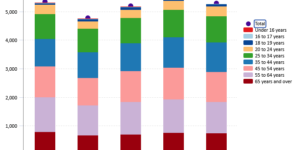HyperScience, a startup using machine learning to automate office work-related data entry and more, attracted $30 million in Series B financing from investors including Australian insurer QBE.
 New York-based equity firm Stripes Group led the round, with existing investors FirstMark Capital and Felicis Ventures also participating. Beyond QBE, new investors Battery Ventures, Global Founders Fund and TD Ameritrade also joined on.
New York-based equity firm Stripes Group led the round, with existing investors FirstMark Capital and Felicis Ventures also participating. Beyond QBE, new investors Battery Ventures, Global Founders Fund and TD Ameritrade also joined on.
HyperScience plans to use the cash infusion to fuel further investment in engineering and product development, sales and marketing, and a rapid expansion of its overall staff. There will also be an expansion of automation technology beyond the company’s initial focus on data entry.
QBE invested in HyperScience a year ago and also forged a multi-year partnership with the company calling for QBE to use its products globally and company-wide. Participation in this latest HyperScience financing builds on that strategy, QBE Managing Director Ted Stuckey said in prepared remarks.
“We’ve been able to drive immediate value to our business through our initial implementation of HyperScience,” Stuckey said. “We look forward to continuing to work closely with the team at HyperScience to expand our use of their products globally across QBE.”
HyperScience CEO Peter Brodsky emphasized, however, that its focus goes well beyond insurance.
“By automating data entry, we help our customers in finance, insurance, healthcare and government extract data better, faster and cheaper, Brodsky said in prepared remarks. “Furthermore, we’re excited to be expanding our product offering to automate even more types of office work.”
HyperScience describes its focus as helping companies “reduce their dependence on costly, slow, and error-prone manual data entry operations.” Specifically, the company asserts that its technology automates the transcription of documents humans can read into machine-readable data much quicker than legacy data capture technologies can.
Automation covers areas including data entry, invoice processing, and compliance-driven data reconciliation.
Source: HyperScience





















 Study: Widening Gap Between Cyber Attack Causes, Public Perception
Study: Widening Gap Between Cyber Attack Causes, Public Perception  Mixed Bag: What Trump 2.0 Tariffs, DOGE Activities Mean For Insurers
Mixed Bag: What Trump 2.0 Tariffs, DOGE Activities Mean For Insurers  Moderating Premium Rates, Falling Yields: European Insurers Resilient
Moderating Premium Rates, Falling Yields: European Insurers Resilient  Dear Elon and Vivek: Insurance Commissioners Urge DOGE to Ditch FIO
Dear Elon and Vivek: Insurance Commissioners Urge DOGE to Ditch FIO 





